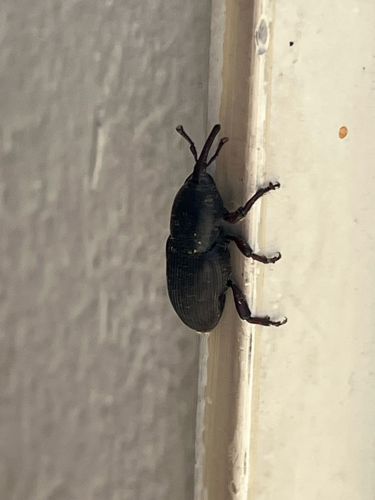Broad-nosed Weevil or Root Weevil
Scientific Name: Likely Hylobius pales (Pales Weevil) or a related species within the subfamily Entiminae (broad-nosed weevils), due to the robust body and blunt snout. A precise identification without more detail or geographic context is challenging.
Order & Family: Order: Coleoptera, Family: Curculionidae
Size: Typically 8-13 mm (0.3-0.5 inches) in length.

Natural Habitat
Forests, woodlands, orchards, nurseries, and urban landscapes where host trees are present. They are often associated with pine, oak, and other deciduous and coniferous trees.
Diet & Feeding
Adults feed on the foliage of various trees and shrubs, often creating notches on leaf margins. Larvae feed on the roots and inner bark of stressed, dying, or recently cut trees, sometimes extending into the heartwood.
Behavior Patterns
Adults are nocturnal and can fly. They are attracted to lights. Females lay eggs singly on dead or dying trees, or directly on roots. Larvae bore into the wood and feed internally, pupating within the wood. The life cycle can take one to two years depending on conditions.
Risks & Benefits
Risks: Can be pests in forestry and horticulture. Larval feeding can girdle roots and tree trunks, leading to tree decline or death, especially in nurseries or young plantations. Adults cause cosmetic damage to foliage but rarely affect tree health significantly. Benefits: As decomposers, larvae contribute to the breakdown of dead wood, returning nutrients to the ecosystem. However, their role as pests often outweighs their benefits in managed environments.
Identified on: 8/24/2025